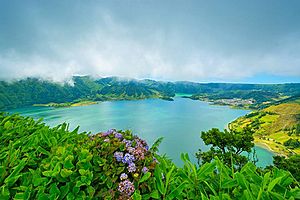House of Cámara facts for kids
Quick facts for kids House of Cámara |
|
|---|---|
| Noble family | |
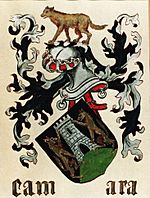
The Coat of arms of the House of Cámara as depicted in the Livro do Armeiro-Mor, the oldest and most important roll of arms of the Kingdom of Portugal, circa 1520.
|
|
| Place of origin | Alcalá de Henares, Spain (Kingdom of Castile) |
| Founded | 1227 (797 years ago) |
| Founder | Gonzalo de la Cámara (Spanish branch) João Gonçalves da Câmara (Zarco) (Portuguese branch) Juan de la Cámara (Yucatecan branch) |
| Titles |
|
The House of Cámara (also known as de la Cámara in Spanish or da Câmara in Portuguese) is a very old and important family. They have a rich history in Spain, Portugal, and Mexico. This family became known for their service to kings and queens.
Their story began in 1227 when they were recognized for their bravery in a battle in Spain. Over the centuries, they continued to serve the Spanish Crown, especially during the Reconquista, a long period when Christian kingdoms took back land from Muslim rulers in Spain.
A part of the family later moved to Portugal. They are directly related to João Gonçalves Zarco, who discovered the island of Madeira. For many years, they were important leaders on São Miguel Island in the Azores. During a time when Portugal was choosing a new king, the Câmara family supported Philip II of Spain. This helped him become King of Portugal. Because of their loyalty, the family received many important noble titles, like Counts and Marquises.
The Cámara family also became very important in Mexico. Their history there goes back to the 1500s. Juan de la Cámara was a key figure in the Spanish conquest of Yucatán. He helped found the city of Mérida. In Mexico, they were large landowners and part of the Mexican nobility. They often married into other powerful families to keep their high status. The family even owned the land where Cancún, a famous tourist spot, is today. During the "henequen fiber boom," they became one of the richest families in the Americas. They owned many large farms called haciendas.
However, the Mexican Revolution changed things. The government took away many of their lands. Despite this, a part of the family, the Pino-Cámara clan, continued to be important in business, politics, music, and law.
Contents
Family History
The Câmara family's story began in 1227. A military officer named Gonzalo de la Cámara was honored by Ferdinand III of Castile, the King of Castile. This was because of his important role in the surrender of Baeza from the Moors.
Gonzalo de la Cámara was from Alcalá de Henares, but his family later settled in Galicia, in northern Spain. One famous family member was Juan Rodríguez de la Cámara, a poet from the late 1400s. He was born in Padrón, a town in Galicia.
The Portuguese Branch
Over time, a part of the Câmara family moved to Portugal. In 1420, João Gonçalves da Câmara (Zarco), a descendant of this family line, discovered the Madeira Archipelago.
For many centuries, the family held the special title of Captain-Major (Capitães dos Donatários) of São Miguel Island in the Azores. This meant they were the hereditary leaders of the island. For 500 years, until the Portuguese monarchy ended in 1910, his descendants held many noble titles. These included two marquisates and five countships. This made them one of the most important noble families in Portugal. By 1520, their family crest was already shown in the Livro do Armeiro-Mor. This was the oldest and most important book of coats of arms in Portugal.
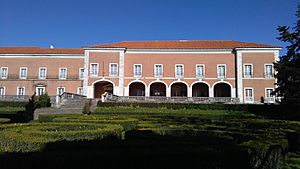
In 1573, Manuel da Câmara, the captain of São Miguel, gave control of the island to his son, Rui Gonçalves da Câmara III. Manuel then moved to Lisbon. After King Henry of Portugal died, several people wanted to become king. The main fight was between António, Prior of Crato and Philip II of Spain. Rui, who was in Lisbon, decided to support Philip II.
Because of Rui's support, King Philip gave him the title of Count of Vila Franca. At that time, being a Count was one of the highest honors a king could give to a Portuguese citizen. The title was named after Vila Franca do Campo, which was the main town on São Miguel Island. However, some local leaders didn't like that a Spanish king gave this title. Philip II said it was just an honorary title and didn't take away any local rights.
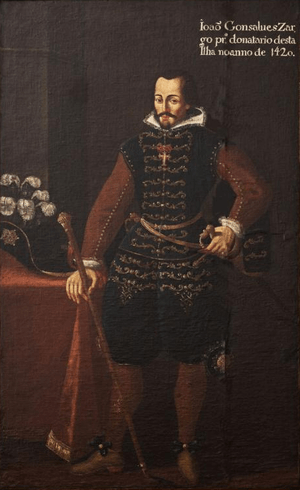
Rui da Câmara later arrived in the Azores with a fleet of ships. These ships were sent to conquer the island of Terceira, which had not accepted Philip as King of Portugal. This began a time when Spain ruled the Azores. The Gonçalves da Câmara family enjoyed many special rights during this period.
When John IV of Portugal became king, many islands in the Azores accepted him. Rodrigo da Câmara, the 3rd Count of Vila Franca, also accepted John IV after the Spanish were defeated. Rodrigo kept his titles. However, in 1650, the Inquisition (a religious court) investigated and arrested him. His lands and titles were taken away. He died in 1601. His wife, who was related to Vasco da Gama, managed to convince the King to give back their family honors after her husband's death. The King decided to change the title from Count of Vila Franca to Count of Ribeira Grande. This was because the Vila Franca title had caused problems before.
In 1766, King Joseph I of Portugal created the Captaincy-General of the Azores. This new government body took over all civil, judicial, and military power. This meant the Captains-Major, like the Câmara family, no longer held that specific role. However, the family kept their other noble titles until Portugal became a republic in 1910. João da Câmara, a famous writer and son of the 8th Count of Ribeira Grande, was the first Portuguese person nominated for the Nobel Prize for Literature in 1901.
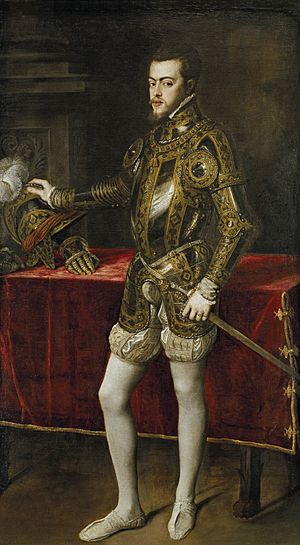
Counts of Vila Franca
- Rui Gonçalves da Câmara III, 1st Count of Vila Franca (1578-1601)
- Manuel da Câmara II, 2nd Count of Vila Franca (1601-1619)
- Rodrigo da Câmara, 3rd Count of Vila Franca (1619-1662)
- Manuel da Câmara III, 4th Count of Vila Franca (1662-1673)
Counts of Ribeira Grande
- D. Manuel Luís Baltazar da Câmara, 1st Count of Ribeira Grande (1630–1675)
- D. José Rodrigo da Câmara, 2nd Count of Ribeira Grande (1665–1724)
- D. Luís Manuel da Câmara, 3rd Count of Ribeira Grande (1685–1723)
- D. José da Câmara, 4th Count of Ribeira Grande (1712–1757)
- D. Guido Augusto da Câmara e Ataíde, 5th Count of Ribeira Grande (1718–1770)
- D. Luís António José Maria da Câmara, 6th Count of Ribeira Grande (1754–1802)
- D. José Maria Gonçalves Zarco da Câmara, 7th Count of Ribeira Grande (1784–1820)
Marquesses of Ribeira Grande
- D. Francisco de Sales Gonçalves Zarco da Câmara, 8th Count of Ribeira Grande (1819–1872), became 1st Marquis of Ribeira Grande in 1855.
- D. José Maria Gonçalves Zarco da Câmara, 9th Count of Ribeira Grande (1843–1907)
- D. Vicente de Paula Gonçalves Zarco da Câmara, 10th Count of Ribeira Grande (1875–1946)
Pretenders
After the monarchy ended in Portugal, the new government removed noble titles. However, some descendants of the Câmara family still use these honorary titles.
The Mexican Branch

Juan de la Cámara, also from Alcalá de Henares in Spain, came to the New World in 1539. He joined Francisco de Montejo in the Spanish conquest of Yucatán. In 1542, when the city of Mérida was founded, Juan de la Cámara was one of its founders. He served as the city's chief constable and later as its mayor.
In Spain, "hidalgo" was a special noble status. It gave people certain privileges and tax breaks. During the conquest of Yucatán, King Charles I of Spain said that only hidalgos should get benefits from the conquest. Hidalgos received land and special grants called encomiendas for their service.
The Cámara family was special because they could prove their connection to old medieval nobility. This made their status even higher. They are one of the oldest "criollo" families in Yucatán. Criollos were people born in the Americas but of Spanish descent. The family owned the Cancún Ranch and its surrounding areas for many years. Today, Cancún is a very famous tourist spot in the Caribbean.
The Cámara family often married into other powerful families. They married descendants of other conquistadors and hidalgos. This helped them form a distinct social group and keep their important family history strong. They married into families like those of Francisco de Montejo and Andrés Dorantes de Carranza. This showed how closely linked these important families were.
Even though they were noble, the Câmara family and other conquerors faced challenges. The Spanish Crown didn't want to give out too many noble titles in the New World. They feared it would create powerful nobles who might challenge the king's power. It took a lot of effort for the conquistadors to get the recognition they felt they deserved.
Historian John Elliott noted that the Crown was also slow to give land to the conquerors. Only a small number of Europeans received large land grants. Many families struggled to keep their lands and privileges. The Câmara family is considered special because they managed to stay powerful from the time of the Conquest until today. They became one of the most notable families in the Mexican nobility and major landowners in the Yucatán Peninsula.
The Cámara family also had great influence in the late 1800s and early 1900s. During this time, Yucatán became the world's main producer of henequen fiber. Henequen was used to make sacks and rope, which were very important for industries around the world. By 1900, the United States alone was importing huge amounts of henequen. This made Yucatán very wealthy and industrialized.
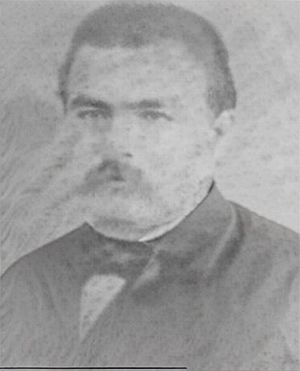
The traditional landowning families, including the Cámara family, adapted to these changes. They became part of a small group of powerful industrialists. This group controlled much of the land and henequen production. They also guided regional politics. They became incredibly rich, making them among the wealthiest people in the Americas.
The family owned many haciendas across the Yucatán Peninsula. Some of these included Hacienda San Antonio Cámara, Hacienda Chucmichén, and Hacienda Santa Ana. They also owned the famous Cámara Houses in Mérida.
After the Mexican Revolution, the government made changes to land ownership. In 1937, President Lázaro Cárdenas del Río took away the haciendas from the traditional landowning families. These lands were turned into ejidos, which are communal lands owned by local communities. The Cámara family and other landowners tried to stop this, but the president refused. Many former haciendas became ruins and lost their economic power.
The Pino-Cámara Clan
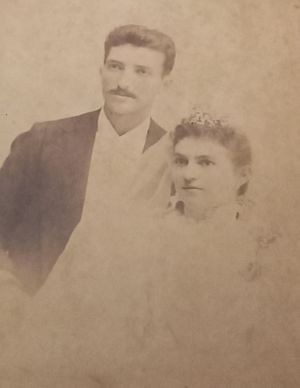
A very important part of the family is the Pino-Cámara clan. They are descendants of Raymundo Cámara Luján, a powerful businessman. His oldest daughter, María Cámara Vales, married José María Pino Suárez. He served as the vice-president of Mexico from 1911 until he was assassinated in 1913.
Two of Raymundo's sons, Alfredo and Nicolás Cámara Vales, became governors of Quintana Roo and Yucatan, respectively. His daughter Hortensia Cámara Vales and her husband, Pablo Castellanos León, were famous concert pianists. They helped introduce French and German classical music to Mexico. Their son, Pablo Castellanos Cámara, also became a concert pianist.
Other notable family members include Alfredo Pino Cámara, who was a justice of the Supreme Court. Fernando Cámara Barbachano was a social anthropologist and museologist. Raymundo's great-grandson, Ismael Moreno Pino, was a diplomat. He helped negotiate the Treaty of Tlatelolco, which banned nuclear weapons in Latin America and the Caribbean.
See also
 In Spanish: Familia de la Cámara para niños
In Spanish: Familia de la Cámara para niños
- List of noble houses
- Count of Vila Franca
- Count of Ribeira Grande
- Portuguese nobility
- Spanish nobility
- Mexican nobility
- Juan Rodríguez de la Cámara
- João Gonçalves da Câmara (Zarco)
- Captains of the Donataries


